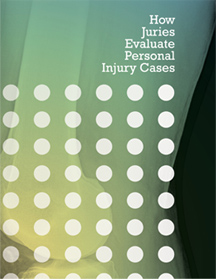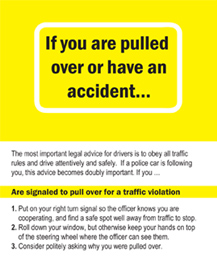Car accidents — Initial evaluation — Liability case illustration
This is a sample lawsuit that illustrates the analysis that a personal injury lawyer might make regarding liability in a car accident. This lawsuit involved a car that collided with a stopped city garbage truck.
Facts
A young working father of four was killed when the car he drove struck the rear of a city garbage truck that was stopped in the middle lane of a bridge.
The truck driver claimed he had stopped to help a coworker in a disabled vehicle, and the hazard flashers on his vehicle were operating when the collision occurred. The police officer at the scene noted that the truck’s hazard lights were off upon his arrival, but that the truck driver stated the lights went off when he turned off his engine after the accident.
Liability analysis
At first look the driver of the garbage truck does not appear to be negligent because stopping behind a disabled vehicle to give assistance is not unreasonable if appropriate warnings are given to oncoming motorists.
However, there are ways to explore the evidence more fully to see whether there is some legal basis for liability. Some of the questions that a personal injury lawyer might consider include the following.
- Are there any statutes that change or qualify the general rule that stopping behind a disabled vehicle to give assistance is not unreasonable if appropriate warnings are given?
- Were there any alternatives available to the truck driver? One case held that it was negligent to stop on a parkway to exchange license data after a collision when there were alternatives available.
- What was the problem with the disabled vehicle? One case held that the repair of a flat tire on a highway was negligent.
- How long were the disabled vehicle and the garbage truck parked in the middle lane? One case held that the jury could decide whether it was negligent to leave a disabled vehicle on an expressway.
- Did the garbage truck driver really have his hazard lights on? The garbage truck driver would have been negligent if he failed to have his hazard lights flashing. A newspaper ad may locate a witness who was on the bridge at the time and might know if the truck’s hazard lights were on or off.
- Do hazard lights go off when the engine is shut off? The driver’s explanation as to why his hazard lights were not on when the police arrived was that they “went off when he turned the engine off” following the accident. This appears to contradict common experience that most hazard lights are wired independently from the ignition. To find out if the driver’s explanation of why his lights were off is true, the vehicle could be inspected by a mechanic, or a manual could be obtained from the manufacturer of the vehicle.
- Was the father’s death attributable to a mechanical or engineering defect in his car’s airbag system or crashworthiness design? An accident reconstructionist can analyze the cause of death and the impact to the car. Airbag cases require an automotive mechanic to determine if the airbag deployed, and a professional engineer or accident reconstructionist to determine if they should have deployed based upon the impact. They may also require a doctor to determine if the failure to deploy was a proximate cause of the injuries.
- Did the road or bridge environment contribute to the collision? Did the design and contours of the bridge limit the plaintiff’s field of vision? If so, did the bridge have appropriate signs? It will take a professional engineer to answer these questions. When the considerations deal with the design of the roadway and the appropriate signage or lighting factors, a design engineer will have to go the scene of the accident and determine if there is a flaw in the design. Then research will have to be done to see if there are any prior reported accidents to give the municipality notice of the dangerous condition.



